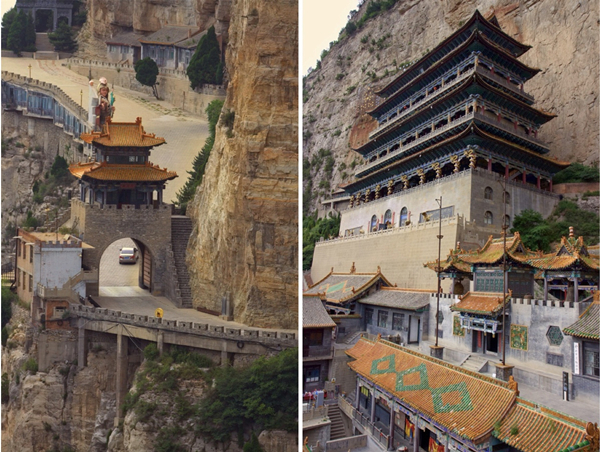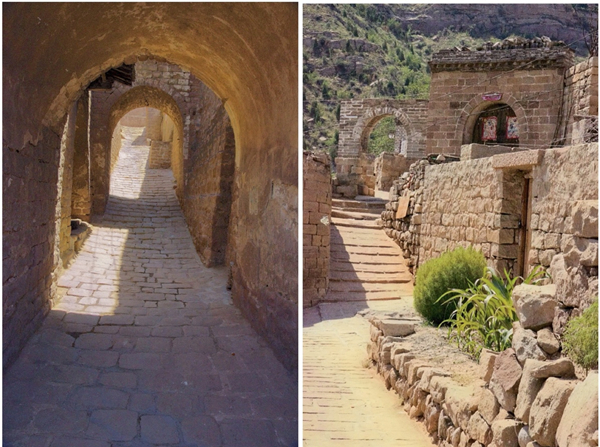Shanxi - a passionate journey to the Yellow River
Updated: 2019-05-22
Road and temple clinging to slopes of Mianshan 2016. [Photo by Bruce Connolly/chinadaily.com.cn]
Recently I took a long trip by conventional train from Chengdu to Beijing. It retraced a route to Sichuan I had first traversed in 1994. Both journeys went through the provinces of Shanxi and neighboring Shaanxi, and both were overnight. But I managed to look out from time-to-time, across clear and starry skies, onto the outlines of a dry landscape renowned for its cave dwellings. The route encompassed the land of the "Yellow Earth", a title referencing vast deposits of wind-blown non-glacial loess carried from northwestern deserts and built up over very long periods of time. Incredibly, around 10 percent of the earth's surface is covered by such material.
For China, an area as large as 640,000 square kilometers around the upper and middle reaches of the Yellow River is known as Huangtu Plateau, with altitudes between 1,000 and 1,800 meters. It takes in much of Shanxi, Shaanxi, Gansu provinces along with Ningxia Hui Autonomous Region and parts of others. The soil is highly erodible, particularly in the more arid western areas, while the Yellow River is so named because of the vast quantities of silt it carries. A feature of such landscapes are deep gullies into which caves have been cut that for centuries were the homes of many residents, indeed some are still used. The 1984 film, Yellow Earth directed by Chen Kaige and photographed by Zhang Yimou helped to capture the physical mood of the area and character of the people from that part of the Yellow River.
Qikou and Xiwan villages next to Yellow River 2016. [Photo by Bruce Connolly/chinadaily.com.cn]
Shanxi, whose literal translation refers to land west of the Taihang Mountain, was one of the first provinces I saw in China, skirting around its northern edge by train in 1987 by train , passing through Datong en route to Beijing. I had also several times, overnighted by train to and from Xi'an, for example. However it was not until 2016 that I had a real opportunity to explore and discover parts of the province, particularly between the provincial capital, Taiyuan and the Yellow River valley.
Before that visit I would hear Shanxi's name synonymous with coal mining and associated pollution. Yes, it is one of China's leading centers of coal production, particularly around Datong. Indeed a railway line was constructed solely to carry lengthy trains transporting coal from Datong to the Bohai Gulf port of Qinghuangdao. However, when I was in Shanxi I saw no coal mines, instead a quite beautiful and at times stunning landscape. With air pollution maybe I was lucky, for air quality and visibility were both excellent as my photo images show. Noticeable efforts are being made to tackle pollution, for example in Taiyuan all taxis are now electric-powered.





